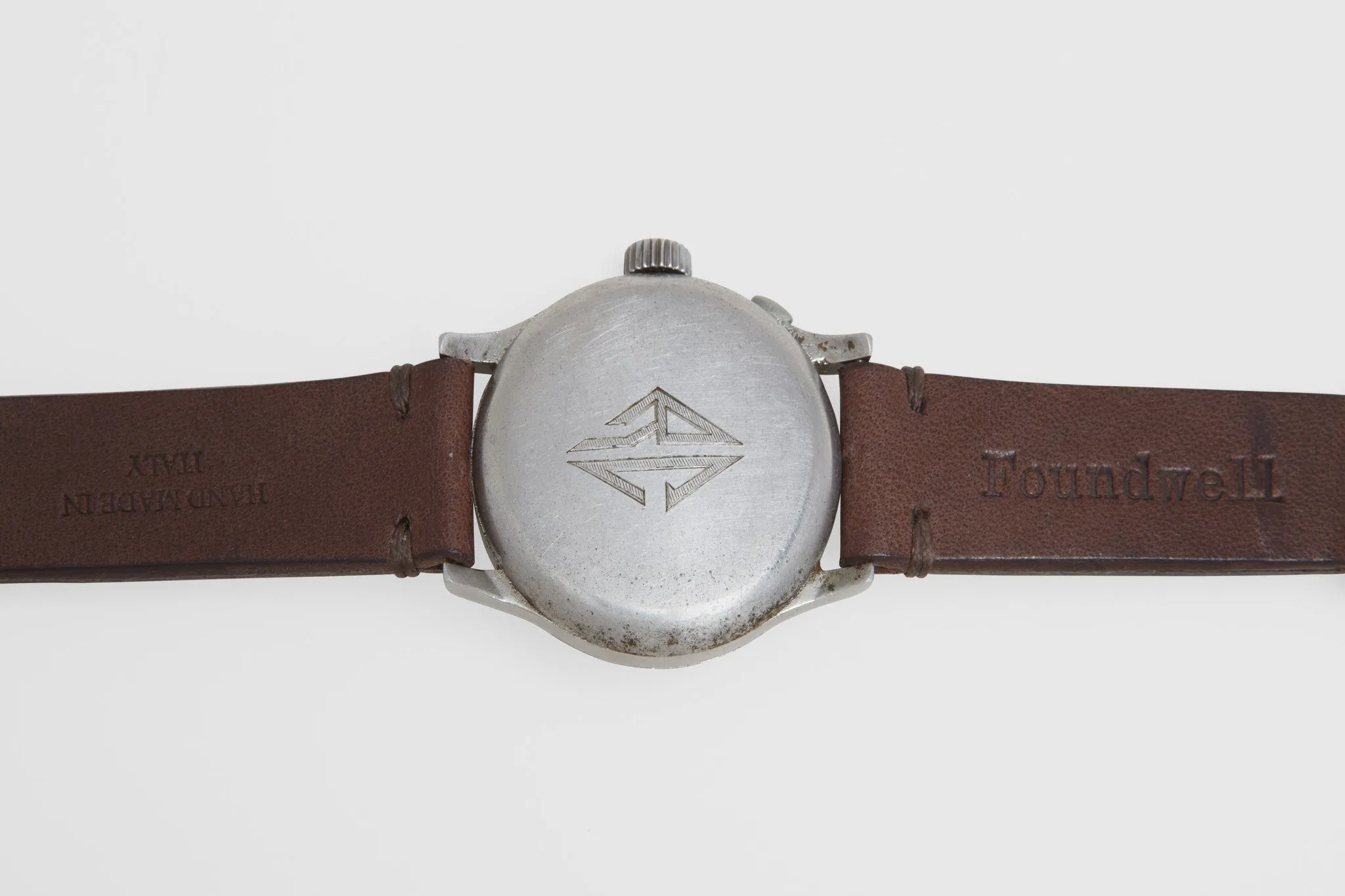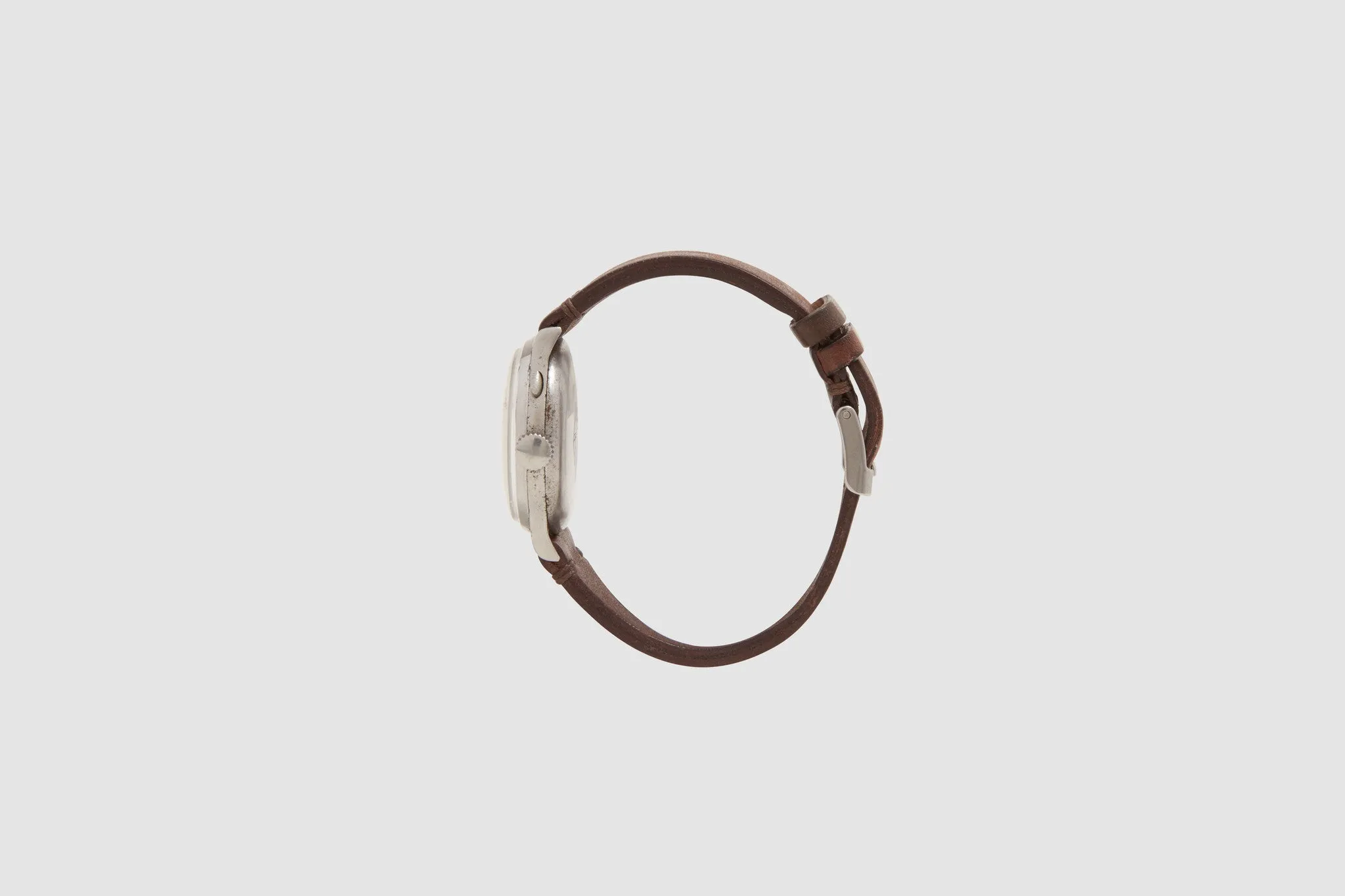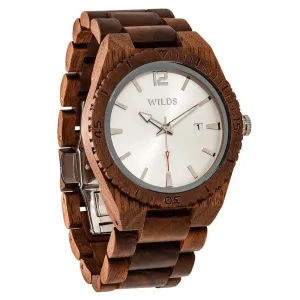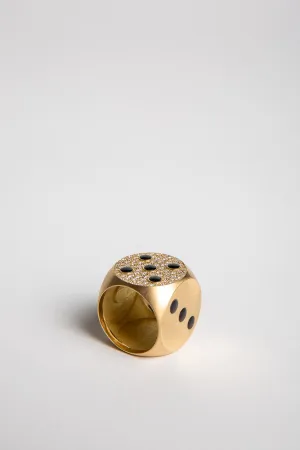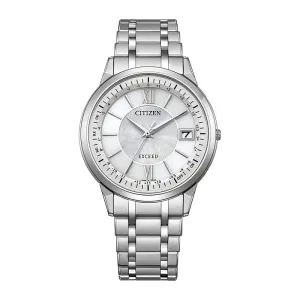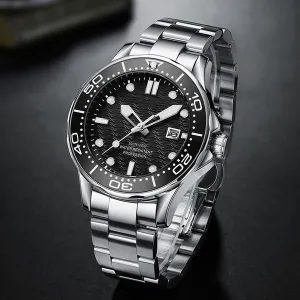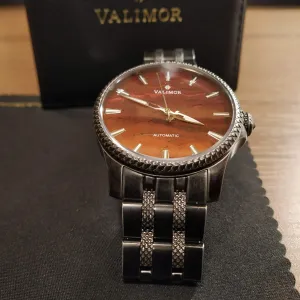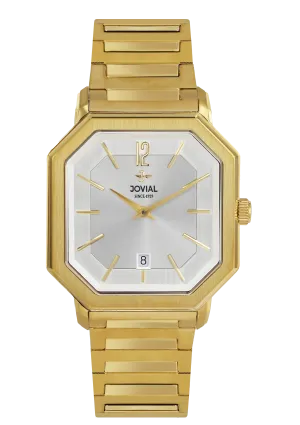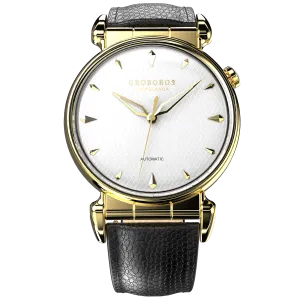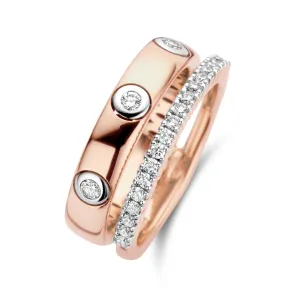An oversized stainless steel single button Wittnauer pilot's chronograph. This is an exceptional, all original very early find. This watch perhaps has everything that a collector of this style of watch is looking for; Presence, originality, condition, and above all, rarity. Wittnauer watches, during the early part of the evolution of the wristwatch, were the most important watch makers in the field of watches for military, navy and early aviation. Albert Wittnauer was a Swiss immigrant who arrived in New York City in 1872 at the age of sixteen, already a skilled watch maker. He began working with his brother in law, Eugene Robert, a retailer importing Swiss watches, which, by 1874, now employed Louis Wittnauer, his younger brother. The first Wittnauer's watch line were made circa 1880, with the Wittnauer brand being formally established in 1885, when Mr. Robert gave the title to Albert Wittnauer under the name the "A. Wittnauer Company". Wittnauer movements were initially made for them by Swiss firms like Revue Thommen and others. They were involved with the U.S Navy for early tests in the budding fields of aviation and navigation. Of the Wittnauer Company and products, horologist Marvin E. Whitney wrote: "No one company has been more involved in the design and production of so many different types of navigational timepieces and been involved in so many history making expeditions..." After working with the U.S military on several wrist watches, timing and navigational instruments for World War One in 1918 saw the introduction of the 'All-Proof'. The world’s first waterproof, shock-proof, anti-magnetic watch. This watch remained poplar with U.S servicemen all the way through World War Two. After this early success Wittnauer went from strength to strength. In 1926 National Broadcasting Company, America’s first radio network, chooses A. Wittnauer Company to provide the official timing for radio broadcasting. In 1927 Wittnauer begins producing a navigational watch for use by aviators. The watch grows out of conversations between Commander P.V.H. Weems, the leading authority on aerial navigation, and Wittnauer watchmaker, J.P.V. Heinmuller. An aviation enthusiast, Heinmuller was then the official timekeeper of the U.S. National Aeronautical Association, as well as the developer of Wittnauer’s line of navigational timepieces, dashboard clocks and other aviation instruments. Then in 1928“Racing the moon,” Captain Charles B.D. Collyer and John Henry Mears circle the globe by air and sea in 24 days, beating the orbiting moon by a full three days. The two use A. Wittnauer Company timepieces throughout the journey. One of the most important moments for the company comes in 1932 Amelia Earhart becomes the first woman, and the first person since Lindbergh, to fly solo across the Atlantic. Her Lockheed Vega-5B monoplane is equipped with A. Wittnauer Company timepieces. The 15-hour trip from Newfoundland to Ireland comes on May 21st, the fifth anniversary of Lindbergh’s flight. The aviation and movie mogul, Howard Hughes, sets a coast-to-coast speed record by flying from Burbank to Newark in seven hours, twenty-eight minutes in 1937. His own Hughes Aircraft H-1 racer, “Winged Bullet,” is equipped with timepieces supplied by Wittnauer. This detailed history paints a pretty compelling picture of how important Wittnauer watches were during the evolution of the chronograph and for pilots and navigators. This watch has an Art Deco 'R C' engraved into the rear outer of the case back, and then inside the case back it has "From Arline to Bob 7 - 19 - 35", along with the "Wittnauer & Cie. Geneve" shield stamp and case number 35XXX. This therefore provides excellent proof to date the watch to 1935. The watch has original radium still in the hands. There is a small repair to the radium in the tip of the hour hand. The sub-dial hands, as well as the blue steel center sweep have had white paint applied to them for them to stand out when being read by the pilot. This would have been done in the factory. The dial itself is The movement is a manual wind, large size calibre 208, 17 jewel unadjusted, with 'A. Wittnauer & Co. Swiss' stamped onto the bridge. The dial is a large glossy black dial with vintaged silver Arabic numerals, writing and sundials. There is some aging to the dial, but it does nothing but enhance the overall feel of this spectacular piece. The stainless-steel case has some pitting to it on the rear of the case, but appears to have never been polished, and has an amazing presence on the wrist. The original large crown and fine oval pusher are also present. All in all, this is an exceptional, and exceedingly rare part of wrist watch history.


